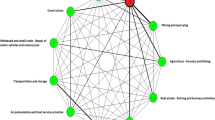Abstract.
In this paper we adopt the Markov-switching heteroscedasticity model to analyse the inflation series for G7 countries and examine the interaction between inflation rate and its uncertainty over both the short- and long-run. It is found that the relationship between inflation and inflation uncertainty depends on whether the shock is permanent or transitory. The relationship also differs from country to country. High uncertainty about long-run inflation is associated with a significant positive shift in inflation for Canada, Germany, and Japan. High uncertainty about short-run inflation is associated with a significant positive shift in inflation for Germany and USA, and a significant negative shift in inflation for Canada. The modelling approach employed in this paper is empirically supported by various diagnostics including the Vuong test. We also derive the two components of the variance of inflation forecast for a particular forecast horizon. It is found that the inflation uncertainty increases at all horizons in the middle of 1970s and return to the low level in the middle of 1980s.
Similar content being viewed by others
Author information
Authors and Affiliations
Corresponding author
Additional information
First version received: June 2001/Final version received: October 2003
We would like to thank three anonymous referees for many helpful comments and suggestions.
Rights and permissions
About this article
Cite this article
Bhar, R., Hamori, S. The link between inflation and inflation uncertainty: Evidence from G7 countries. Empirical Economics 29, 825–853 (2004). https://doi.org/10.1007/s00181-004-0220-x
Issue Date:
DOI: https://doi.org/10.1007/s00181-004-0220-x




